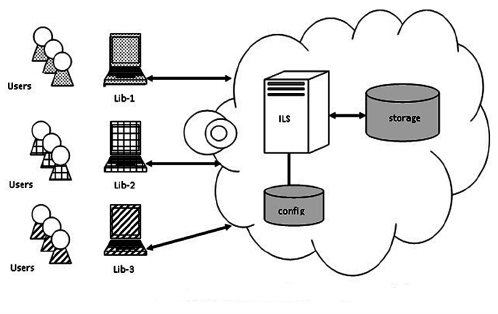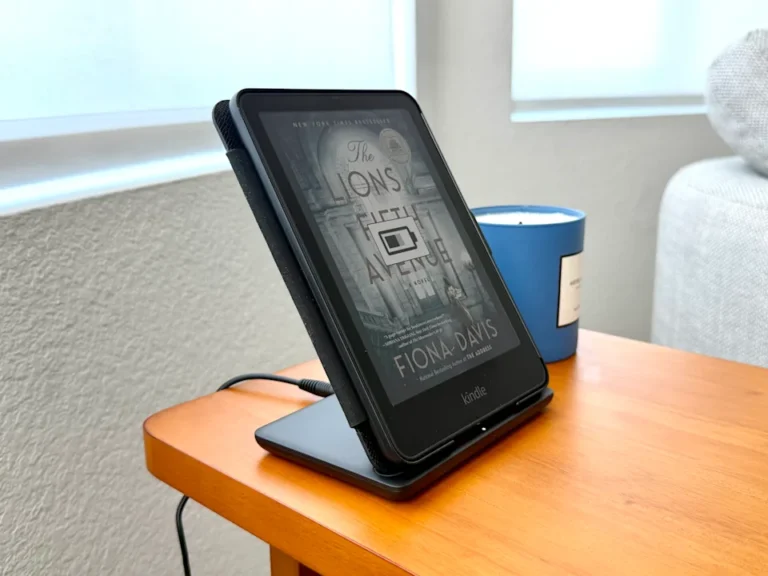Corporate Software Inspector: The Complete Guide for Modern Enterprises
A Corporate Software Inspector is a comprehensive digital solution designed to monitor, analyze, and ensure compliance across enterprise software ecosystems. It helps organizations verify that all installed programs, licenses, and integrations adhere to corporate policies, cybersecurity standards, and regulatory frameworks. This tool protects enterprises from financial penalties, data breaches, and operational inefficiencies by identifying unauthorized or outdated applications in real time. The corporate software inspector functions as both a compliance enforcer and a performance auditor, enabling IT teams to maintain control over complex software infrastructures across cloud, hybrid, and on-premise environments.
What is a Corporate Software Inspector?
A corporate software inspector is a centralized management system that performs automated software audits within an organization. It scans every endpoint, server, and workstation to detect installed applications, version histories, and security vulnerabilities.
Unlike traditional asset management tools, the corporate software inspector combines license validation, vulnerability scanning, usage analytics, and compliance reporting under one intelligent platform. It aligns IT operations with enterprise governance requirements and ensures transparency across the entire digital infrastructure.
Key Characteristics:
- Detects unauthorized software installations.
- Evaluates license validity and expiration.
- Monitors real time updates and patch activities.
- Reports compliance with ISO, GDPR, HIPAA, and SOC standards.
- Reduces operational risks through predictive analytics.
Importance of Corporate Software Inspection
Ensuring Regulatory Compliance
Enterprises across sectors must comply with strict digital governance laws. A corporate software inspector verifies that all systems follow regulatory frameworks such as GDPR (General Data Protection Regulation) for data protection, SOX (Sarbanes Oxley Act) for financial integrity, and HIPAA (Health Insurance Portability and Accountability Act) for healthcare privacy.
Reducing Software Licensing Costs
Unused or duplicate software licenses inflate IT budgets. Through real-time inventory, the inspector identifies redundant tools and recommends optimization strategies. This allows organizations to reallocate resources efficiently and avoid legal issues related to over-licensing or piracy.
Enhancing Cybersecurity
Outdated or unverified applications create vulnerabilities that hackers can exploit. A corporate software inspector detects unpatched versions and monitors potential backdoors, safeguarding corporate data and network integrity.
See More: COSJFXHR: The Next Generation AI Technology Revolution
Digper2: The Complete Guide to Ecuadorian Navy’s Personnel Management System
Core Functions of a Corporate Software Inspector
| Function | Description | Example Tools |
|---|---|---|
| Software Discovery | Identifies all installed applications across devices. | Lansweeper, ManageEngine |
| License Compliance | Validates licenses and ensures legal usage. | Flexera, Snow License Manager |
| Vulnerability Management | Detects outdated software and applies patches. | Tenable, Rapid7 |
| Usage Analytics | Tracks frequency and duration of software use. | Nexthink, SysTrack |
| Compliance Reporting | Generates automated audit-ready reports. | ServiceNow, Qualys |
How a Corporate Software Inspector Works
The software inspector integrates with system management frameworks using APIs or agents. Once deployed, it collects metadata on applications, including file paths, installation dates, and license details. The tool then compares this information against a centralized compliance database to flag anomalies. The system uses AI driven anomaly detection to predict potential compliance risks. It can automatically disable or quarantine unauthorized programs to prevent data leakage or system corruption. Additionally, it provides detailed dashboards for CIOs, compliance officers, and auditors.
Key Benefits of Implementing Corporate Software Inspector
1. Streamlined Asset Management
It eliminates manual tracking by maintaining a unified inventory of all corporate applications.
2. Improved Risk Mitigation
Real-time alerts help IT teams address vulnerabilities before they become threats.
3. Enhanced Productivity
Employees operate within approved software ecosystems, reducing compatibility issues and downtime.
4. Cost Optimization
Accurate tracking prevents over purchasing of licenses, optimizing IT budgets effectively.
5. Transparent Governance
Comprehensive audit trails simplify internal and external compliance assessments.
Components of a Modern Corporate Software Inspector
a) Discovery Engine
This module continuously scans networks to detect new installations and configurations.
b) Compliance Analyzer
It compares software data with regulatory and licensing databases.
c) Reporting Dashboard
Executives access performance metrics, cost analyses, and compliance summaries in real time.
d) Automation Layer
This component performs automated license renewals, deactivations, and patch deployments.
e) Integration Gateway
It allows synchronization with ERP, CRM, and HRMS systems for a unified IT governance framework.
Applications in Enterprise Ecosystems
In Large Corporations
Global enterprises utilize inspectors to maintain uniform compliance across multiple countries and subsidiaries.
In SMEs
Small and medium enterprises use it to minimize audit complexities and optimize operational expenses.
In Government Organizations
Public sector agencies rely on software inspectors to secure classified data and meet statutory obligations.
In Healthcare and Finance
These sectors deploy inspectors to ensure secure handling of sensitive patient and financial information.
Emerging Trends in Software Inspection
1. AI Driven Predictive Compliance
Artificial intelligence analyzes user patterns to forecast license breaches or compliance violations.
2. Blockchain Integration
Blockchain ensures immutable audit trails for license authenticity verification.
3. Cloud-Native Inspectors
Cloud based inspectors manage distributed environments across AWS, Azure, and Google Cloud.
4. Zero Trust Security Framework
The integration of Zero Trust principles restricts unauthorized access to critical software layers.
Best Practices for Implementing a Corporate Software Inspector
- Conduct a Software Audit Baseline: Establish an initial inventory before integration.
- Define Policy Rules: Set thresholds for license usage, updates, and renewals.
- Train IT Staff: Ensure technical teams understand alert mechanisms and response protocols.
- Integrate with CMDB Systems: Connect the inspector to configuration management databases for full visibility.
- Schedule Periodic Reviews: Regularly assess performance, compliance levels, and cost efficiency.
Top Features to Look for in a Corporate Software Inspector
- Real-time monitoring of endpoints and servers.
- AI-based anomaly detection and predictive analytics.
- Multi-language compliance support (GDPR, ISO 27001, SOX).
- Role-based access control for IT administrators.
- Scalable architecture for cloud and hybrid environments.
Common Mistakes to Avoid During Implementation
- Ignoring third party integration compatibility.
- Overlooking employee privacy in monitoring tools.
- Failing to update the compliance rule set regularly.
- Relying solely on manual audit verification.
- Neglecting to backup configuration and license data.
Future of Corporate Software Inspection
The next generation of software inspectors will leverage machine learning, predictive risk scoring, and digital twin modeling to simulate compliance outcomes. Enterprises will deploy autonomous inspection frameworks that adapt to evolving cybersecurity threats. Integration with quantum safe encryption will redefine how corporate systems validate trust and transparency across global networks. As digital ecosystems expand, the corporate software inspector will become a core pillar of IT governance, ensuring reliability, compliance, and accountability in all software operations.
FAQs:
1. What is the main purpose of a corporate software inspector?
The primary purpose is to maintain compliance, ensure license integrity, and enhance cybersecurity across enterprise systems.
2. How does it differ from traditional asset management tools?
Traditional tools track ownership, while corporate software inspectors analyze compliance, usage, and risk in real time.
3. Is a corporate software inspector suitable for small businesses?
Yes, cloud-based versions offer scalable and cost-effective solutions for SMEs seeking compliance and cost control.
4. Can it integrate with cloud services?
Yes, modern inspectors support integration with AWS, Azure, and Google Cloud to manage distributed infrastructure.
5. What are the security benefits of using one?
It prevents unauthorized software installations, mitigates vulnerabilities, and strengthens access control mechanisms.
6. How often should inspections be conducted?
Continuous monitoring is recommended, with comprehensive reports generated monthly or quarterly.
7. Which industries benefit most from corporate software inspectors?
Finance, healthcare, manufacturing, government, and technology sectors gain the highest compliance and security advantages.
Conclusion
A Corporate Software Inspector serves as the digital backbone for enterprise compliance, risk management, and operational optimization. It consolidates license oversight, cybersecurity monitoring, and performance evaluation into one unified platform. With the rise of AI driven analytics and multi cloud ecosystems, organizations adopting corporate software inspectors gain a competitive advantage through reduced risk, cost savings, and improved governance transparency. As global compliance regulations evolve, implementing this solution becomes not just a strategic choice but a business necessity for the modern enterprise.








